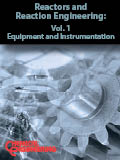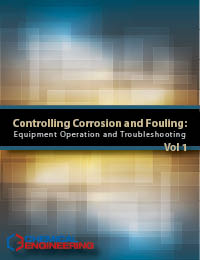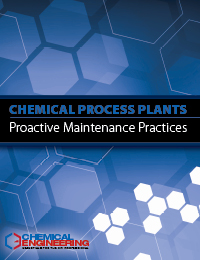Description
Reactors are an essential part of many chemical process operations, and sound design is essential for maximizing reaction rates and optimizing throughput rates. The articles in this guidebook provide useful engineering information related to the design, operation and maintenance of agitated reactors, continuous stirred-tank reactors, millichannel reactors and other reactor designs.
There is focus on increasing reaction rates and throughput through the use of improved mixing strategies, the use of heuristic rules, and enhanced understanding of the physical properties of the fluids involved.
Several of the provided tutorial-style articles provide guidance on using pinch technology and process modeling to improve reactor operation and reduce utility consumption. Additional engineering recommendations are provided for analyzing and improving heat transfer and mass transfer in reactor systems.
98 pages, delivered in a PDF format.
Table of Contents
Mixing Systems: Design and Scale Up
Many options are available to meet the mixing challenges confronted by the CPI. Both theoretical and empirical methods can help the engineer to fit the right system to the task
How to Handle Hydrogen In Process Plants
Process-unit layout, piping, instrumentation/control and materials of construction are but a few of the technical issues requiring special attention during the design or retrofitting of process plants that use hydrogen as a raw material
Know Your Hydrogen- Supply Options
The best delivery method for your process unit depends on your plant location, and on the amount and purity of hydrogen you need
Mechanical Design Aspects for High-Performance Agitated Reactors
An understanding of the mechanical design helps in specifying, maintaining and revamping agitated reactor systems
Focus on Physical Properties To Improve Processes
Exploiting the physical properties of chemicals can offer pathways to more simplified and elegant processes
Facts at Your Fingertips: Gas-Liquid Mixing: Physical Considerations
Millichannel Reactors: A Practical Middle Ground for Production
Reactors with millimeter-scale dimensions provide mixing, heat transfer and other advantages over devices with larger dimensions, and increased robustness compared to microdevices. Here are tips to consider for using them
Adiabatic-Temperature Rise: An Awkward Calculation Made Simple
How to estimate a final temperature after a reaction
CSTRs: Bound for Maximum Conversion
Here, a design approach for continuous stirred-tank reactors is outlined for both reversible and irreversible second-order reactions
Maintenance and Repair of Glass-Lined Equipment
A customized inspection and maintenance program will minimize operational and performance problems
Non-ideal Gas Calculations Using Analytical Residuals
A refresher on simplified calculations of thermodynamic changes of real gases
Making Emulsions
Vacuum processors give cosmetics and pharmaceuticals the smooth treatment
Process Modeling Moves Center-Stage
A model solution for the CPI: reducing risk while increasing profit
Heat Transfer for Huge- Scale Fermentation
The impact of ten-fold scaleup is explored here
Heuristics Rules for Process Equipment
If applied with thought and care, heuristics like these can make life much easier during project scoping, process design, equipment specification and similar tasks
Increase Productivity Through Better Gas-Liquid Mixing
The trend towards larger reactors has increased the demand on agitator systems. Developments in gas-liquid mixing technology can help meet these demands
From Batch to Continuous Processing
Continuous flow reactors can provide many benefits over batch processes. This article answers why and how
CSTR Design for Reversible Reactions
Here, a design approach for continuous stirred-tank reactors is outlined for three cases of second-order
Controlling Heat Transfer in Glass-Lined Reactors
Uniform heating and precise temperature control can be achieved with thermal liquids




